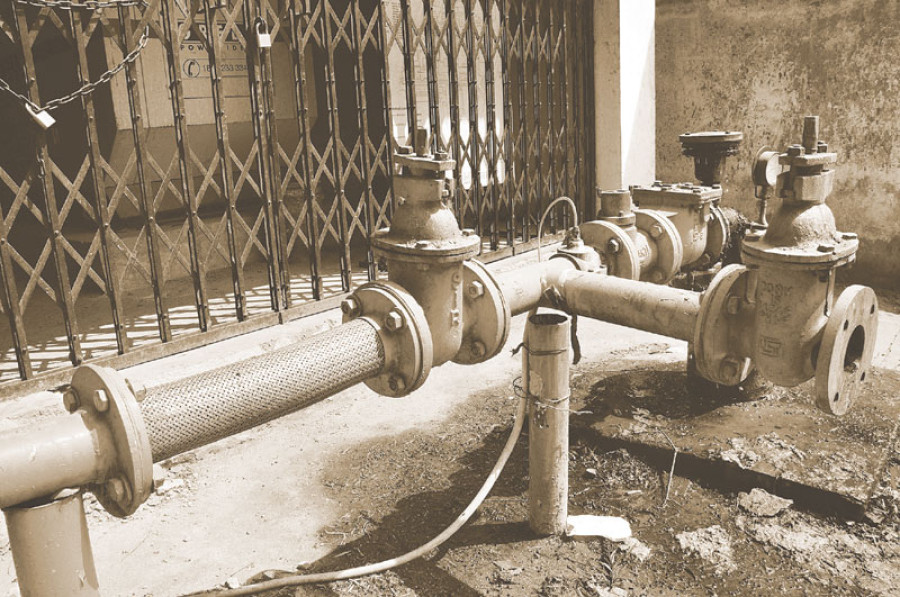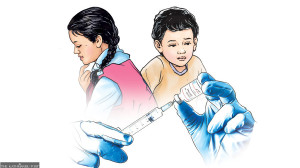Miscellaneous
Light of hope
TUTH’s disaster preparedness shows that the government should initiate similar plans in all public health facilities in the country
Manish Gautam
Dr Pradeep Vaidya comes out of Operation Theatre (OT) wearing a green garb on Wednesday evening. He had entered the OT some five hours back to operate on a patient with pancreatic cancer and comes out with a gleaming face making sharp creases across his cheeks. This was the same Operation Theatre of the Tribhuvan University Teaching Hospital (TUTH) where Dr Vaidya and his team and many of his colleagues conducted numerous operations on patients injured during the earthquake a year ago.
Dr Vaidya is a surgeon whose passion lies in disaster preparedness. For many years, Vaidya has been leading a programme named HOPE (Hospital Preparedness for Emergencies) which facilitates hospitals in preparing their disaster plans from suggesting them to retrofit their facility to performing drills each year and helping in the allocation of resources for any future disaster. A total of 15 hospitals are already part of the HOPE programme and were able to expertly treat patients during the devastating earthquake on April 25 and many strong aftershocks that followed including that of May 12.
The implementation of HOPE programme has paid off well for TUTH. From the earthquake-resistant deep boring facility and seismic proof blood bank to many non-structural retrofitting inside the building and stocks of life-saving drugs, TUTH can function on its own resources for many days in case of major disasters like the earthquake that the country witnessed a year back. It was the prepositioning of these goods that this hospital, that stood sturdy as always, would go on to serve over 3,000 patients and perform over 300 surgeries. On the first day of the earthquake, it treated 542 patients.
TUTH was built by Japanese aid and has been the strongest building amongst hospitals that could withstand major earthquakes. Non-structural retrofitting has strengthened it further. It was because of the building’s sturdiness that life-saving surgeries were performed few hours after the disaster. Despite slew of strong aftershocks that followed, doctors and health workers were able to conduct 35 surgeries throughout the night on the day the earthquake struck.
Inside the OTs and other wards, almost all of the essential components are fixed to the walls. Oxygen cylinders, beds, fans and medicines and others are all affixed to the walls so that they remain intact during the disaster. Even the glass is laminated to avoid any injuries in case of shattering.
“Making small adjustments including the use of metal wire or wooden planks in the frontal portion of the hospital racks prevented the medicines from falling,” said Dr Vaidya. He said these small adjustments helped them save millions and for many hospitals not complying to these changes meant a substantial budget went in buying these drugs. The deep water boring facility has been built with earthquake resistance technology that can draw 18,ooo litres of water in an hour. “Our entire team worked together to make our hospital well-equipped,” said Dr Deepak Mahara, director of the TUTH.
As TUTH felt the need for a blood bank, the United States provided all the support and built a seismically safe blood bank. The US Embassy in Nepal stated that they had provided $600,000 for the construction of the TUTH Blood Bank, and another $380,000 to purchase equipment for the facility.
The blood bank also played a vital role during the disaster. Dr Mahara remembers that there were only 30 units of blood available at the blood bank. “We asked for people to donate blood immediately and in the next two days, we were able to collect some 600 blood pints,” said Dr Mahara. “The participation was overwhelming. At one point we had to stop the blood donation campaign as the collected amount was enough for a few more days.”
All of these concepts were envisioned by a Disaster Plan prepared by TUTH in January of 2006 that remains a sole guiding document for the hospital to act promptly during the disaster. Taking the preparedness in disaster a leap forward, the Institute of Medicine (IoM), whose teaching hospital is TUTH, has designed an undergraduate curriculum on disaster management.
A team of doctors including Dr Vaidya regularly supports various hospitals to prepare their own disaster plans that could be immediately activated in the time of emergencies. Dr Vaidya believes that open spaces for health facilities should be a prerequisite. “Apart from treating patients in the open ground, it also proved vital for other people to remain safe,” said Dr Vaidya.
After all these years, Dr Vaidya reflects back on his work and says that adjusting to small changes helps a lot in disaster preparedness. Each year budget should be allocated to strengthen each hospital facility, he firmly believes. “Building stronger hospitals means we can save more lives and prevent more people from being disabled,” said Dr Vaidya.




 15.12°C Kathmandu
15.12°C Kathmandu








%20(1).jpg&w=300&height=200)

